What is Formula Vee
Formula Vee is a single seater racing car based on VW Beetle running gear. It uses the complete front axle beam, complete rear transaxle, modified 1300cc engine, standard gearbox and brakes. Beyond this, the Formula is of free design and construction (within the regulations). There are a wide variety of makes and models of Vee. The Formula hosts ‘B Class’ brought in to encourage the older chaises to compete.
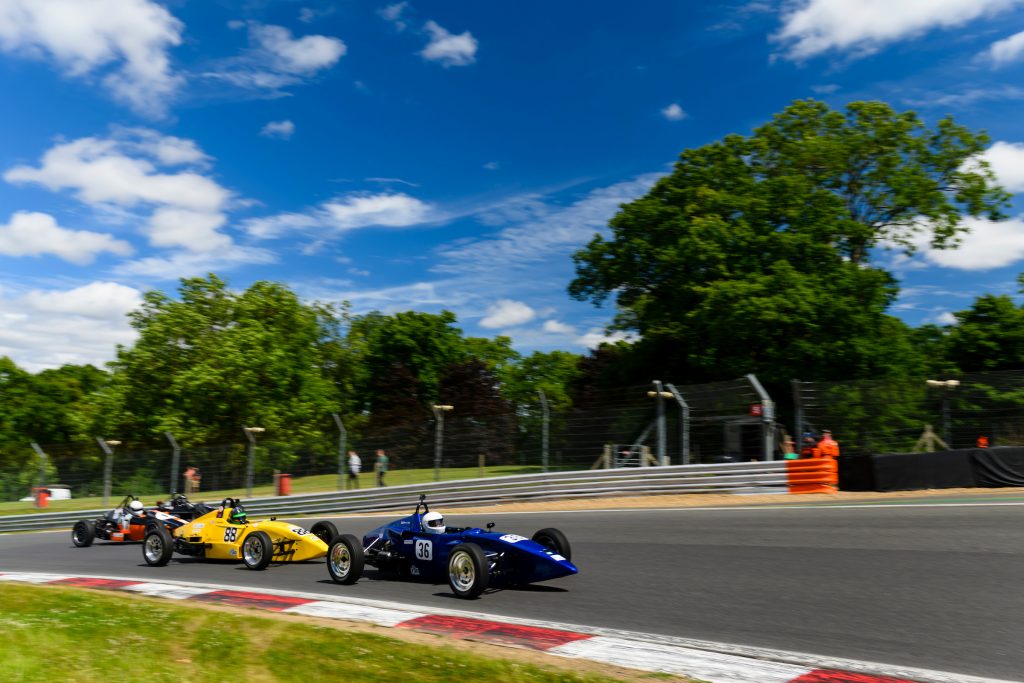
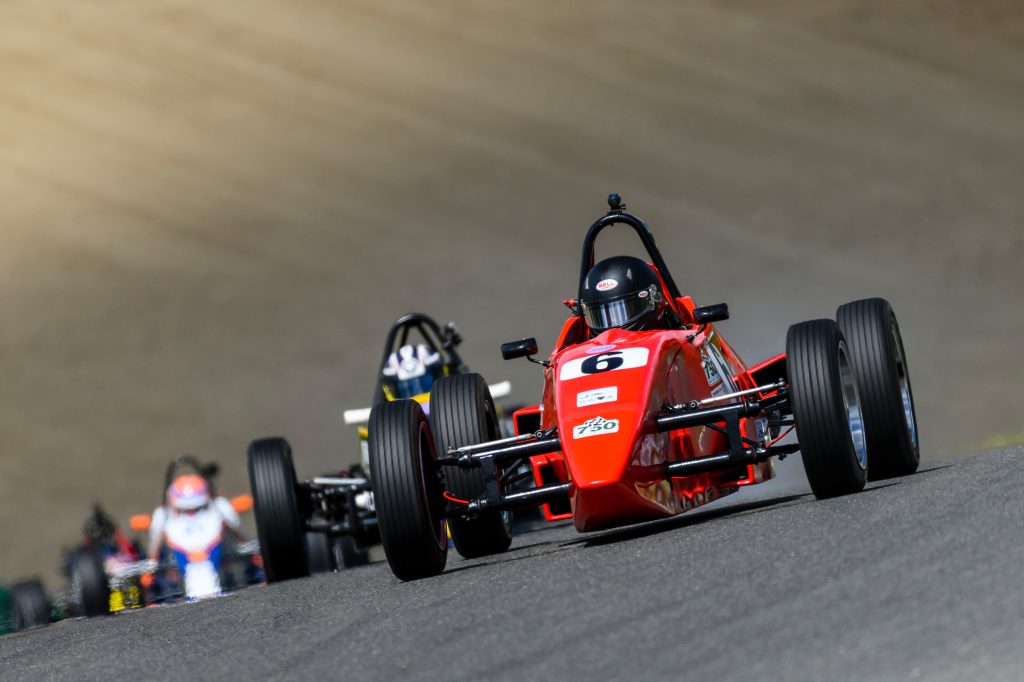
The engine uses air restrictors issued by the club to keep the power similar for all. Costs are minimised on tyres too because only one tyre from Hoosier can be used, wet or dry to equalise performance. No wings are allowed, keeping the technical challenge as simple, cost efficient and straightforward as possible.
To run competitively in Formula Vee you do not need to be “run” by a team. There are advantages and disadvantages… the more you do yourself the cheaper the racing is going to be. If you want a team to run you, do your research and ask around and verify what they claim. Do not be lead to believe that you need to be in a team to win…
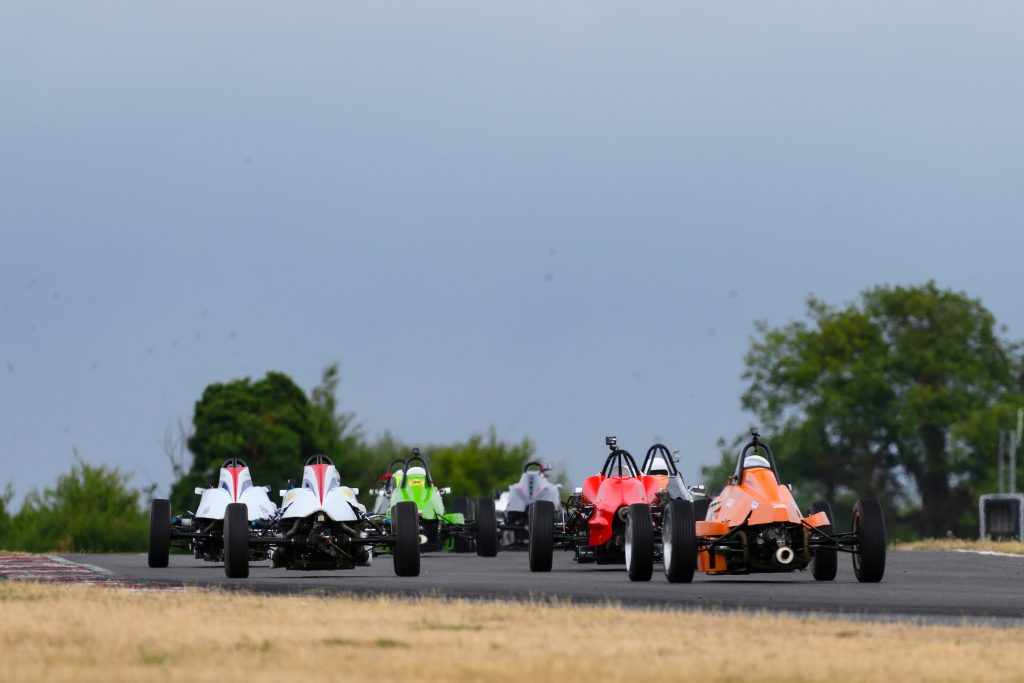
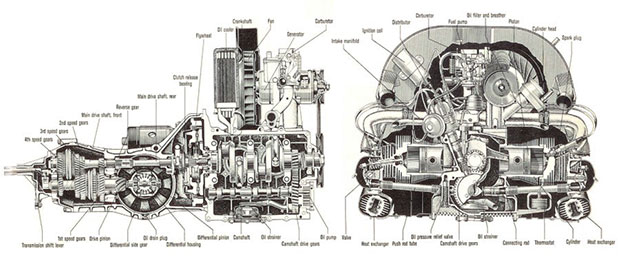
Engine
Formula Vee engines in the UK are based around the 1300cc air-cooled engine used in the VW Beetle. There are strict regulations around the makeup of the engine and it’s components but most of it remains standard. The differences between a standard Beetle engine and a Formula Vee engine are that most of the ancillary bits are thrown in the bin e.g. fan housing, dynamo/alternator, heat exchanger etc etc and the Formula Vee engine tends to look a bit naked when visual comparisons are made. The gearbox used within the UK series is also standard, using the original ratios and internals and are fairly easy to service and look after.
Although the Beetle flat four air cooled engine is simple, it is certainly effective. Out of the box the 1300 should push out approx 35 to 40HP, but after some minor work and a bigger carb expect 90 to 95HP. Although this may not sound a lot in numbers terms it is when you mate it to a car that doesn’t weigh much… 460Kg min weight in Formula Vee… and some impressive performance can be gained.
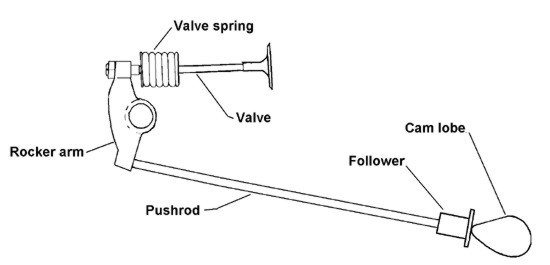
Many in Formula Vee do not build their own engines (although you can if you have the skills or inclination) but get others to do this for them. The beauty with regards to the engines are that it is basic. If there is a problem it is normally very easy to diagnose and fix, with plenty of help available around the paddock if you are unsure.
One of the main things to do to look after the performance of your engine is to ensure that the tappets are adjusted as per your builders’ recommendations. Although this seems a daunting task for the uninitiated it is fairly easy to learn and do. Normally a competent person can do all valves within 20 mins or less.
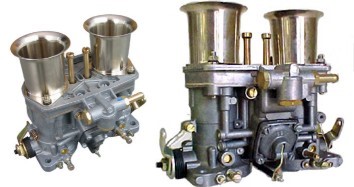
The UK spec Formula Vee championship allow the use of after-market carbs within set limits, hence the original one is discarded. The most prevalent within the formula is the Webber 40 IDF
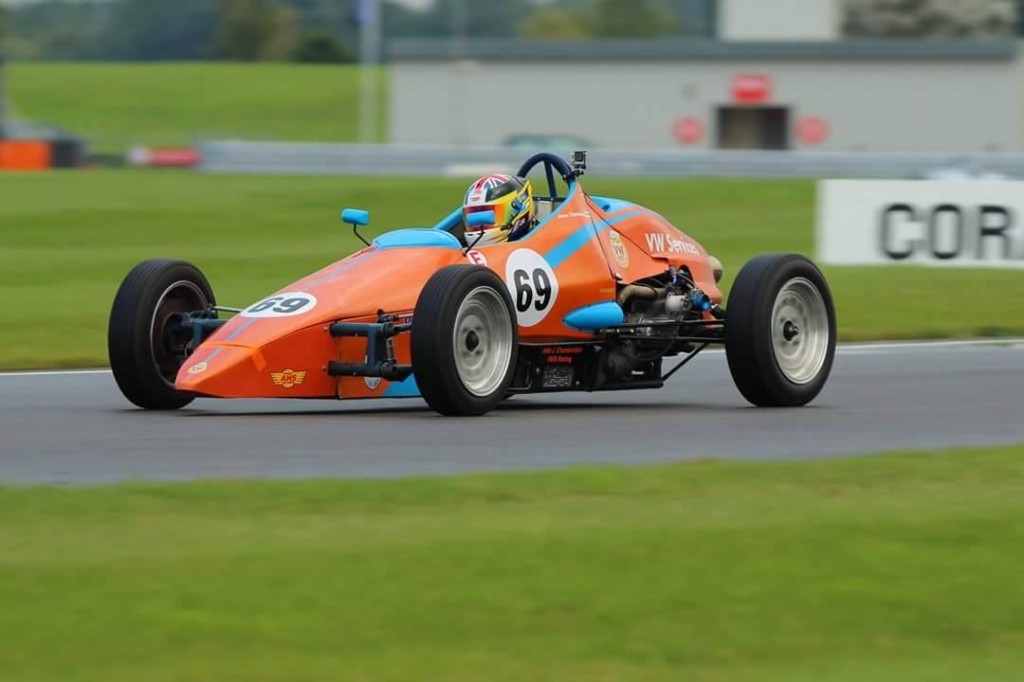
Suspension
Fundamentally Formula Vee is a “Single-seater formula of free design and construction”… that said there are limits around this. The utilisation of certain VW Beetle suspension is mandatory. The front suspension must compromise of the VW axle (H-Beam) of trailing link design, hubs, stub axles and spring pack (leaves) and the majority of the VW rear swing axle components have also to be used. This causes a few problems as these components are great for mass production and transport on the road but by their very nature have fundamental “design flaws” when it comes to adding them onto a racing car.
Front Suspension
The front VW beam is of a trailing link design that utilises two longitudinal links to support the steering ball joints. The wheels are effectively pulled over bumps – the links are in tension when the wheel encounters a resistance. The advantage of utilising a trailing link design is that the system is fairly compact (especially if torsion bar springs are used) and can provide a good ride for road cars. However, when subjected to lateral cornering forces, the arms tend to bend so must be made strong to resist these forces. The camber of the tyres also changes as the vehicle rolls in cornering, reducing adhesion as the outer wheel tends to go into positive camber that is directly proportional to the amount of roll. Trailing link suspensions have an infinitely long swing arm length and a roll centre at ground level.
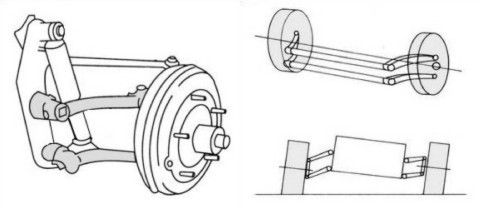
The placement of dampers on a Formula Vee car varies greatly with each solution having its own up and down sides. The first Formula Vee cars used a completely standard beam with the suspension “turrets” still attached whilst utilising stock dampers. Over the years these turrets have disappeared from post 1970ish cars as different solutions have been tried.
In UK Vee today both external and internally enclosed damping is used, each solution having its own set of compromises. External solutions utilise the bottom arm mounting point and then a fixing point on either the beam or the chassis. Internally mounted dampers utilise either pull or push rods connected to the suspension arms then through a rocker to the mounting point which could be behind the pedals or horizontally on the floor or above the legs.
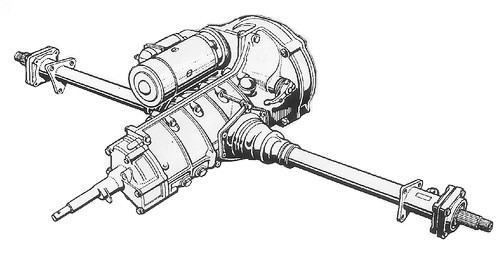
Rear Suspension
If you think that the front suspension was compromised then the rear is even more so in its standard guise. The problems start with the fact that the regulations stipulate the use of the VW swing axle. This basically means that the axle is always perpendicular to the wheels… at any angle!!! Think of the axle and the wheel as the letter “T” on its side.
Conventional thought in the design of race car suspension says that the connection of the hub to the chassis by the means of a coil over type arrangement is the way to go. Unfortunately this is probably the worst thing the car designer can do.

The reason for this is highlighted in the next picture. Due to the nature of the beam axle the roll centre is located above the pivot point for the axle. What this means is that any cornering force applied to the wheels cause a lifting of the chassis. This is because the tyre and beam axle are always perpendicular to each other and the connected gearbox can do nothing else except to lift up in the air.

To combat the deficiencies of the beam axle design many solutions have been tried (and probably have yet to be tried), but the main ones utilised within the UK are the Z-Bar and Zero Roll setups.
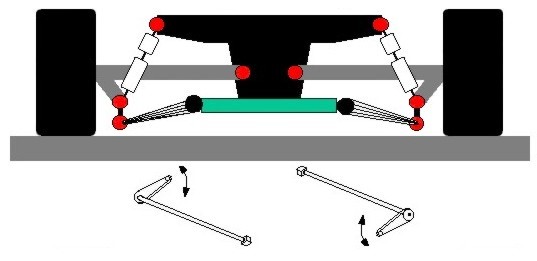
As depicted in the images the aim is to try and keep both wheels under control at a known camber. The Z-Bar has the advantage that roll stiffness can be altered by preloading the Z-Bar.
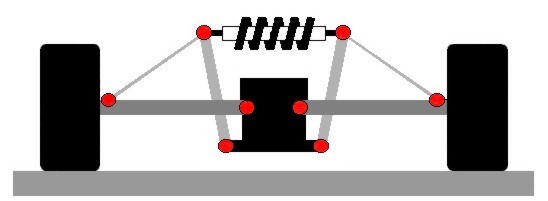
Both of the diagrams depict the solutions in their “pure” form. Walk around the paddock you will notice a myriad of different setups to the basic platforms as shown.

